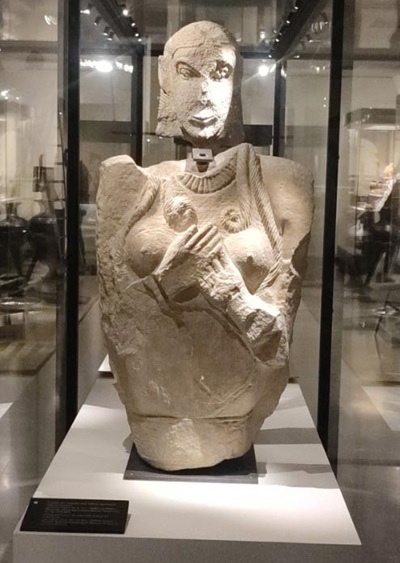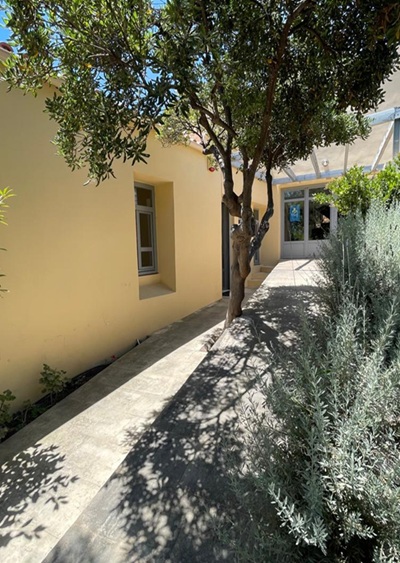
The works of the structural restoration of the burial monument and the construction of a shelter at the Mound of Kasta are proceeding, after the unanimously positive opinion of the Central Archaeological Council, regarding the structural study of the implementation and the electromechanical study of the protection shell.
Following the approval of the architectural preliminary design, the implementation study for the construction of the external shell is completed, so that the auction can proceed immediately, in the context of the integrated -in the Regional Operational Programme of Central Macedonia-ESPA 2014-2020- project “Fixing, Maintenance, Restoration and Promotion of the Mound of Kasta Monument in Amphipolis Serres”.
As stated by the Minister of Culture and Sports Lina Mendoni, “The Ministry of Culture and Sports continues the archaeological work at the Kasta tumulus. Our goal is to make the monument accessible to special groups of the public within this year. Our priority is to ensure the protection of the monument itself and safe access for visitors. Regarding the problems that arose after the recent, unprecedented in intensity, weather phenomena -because of which the Regional Unit of Serres was declared in a state of emergency- in the work of restoring the geometry of the mound, these are already being restored by the competent services of the Ministry of Culture. The monument itself has not encountered any problems. The work of shaping the slopes of the Mound is being reinforced with additional measures in the hydraulic studies, in order to avoid similar problems being repeated due to extreme phenomena. When the project was designed, in 2018, the potential impact of the climate crisis, which is manifesting itself everywhere, was not taken into account.”
According to the approved architectural preliminary design, the proposed outer shell of Area 1 of the Burial Monument aims to:
- The permanent protection of the site, in which the front and the roof are not preserved, from humidity and external weather conditions, given that the walls have delicate coatings and paints, while the Sphinx sculptures located in the site must also be protected for similar reasons.
- To contribute to ensuring stable temperature and humidity conditions, with the additional installation of an electromechanical installation for the entire Tomb Monument, including lighting and air-conditioning facilities.
The architectural proposal for the construction of the shell is based on the geometry and dimensions of the ancient frontage, with absolutely abstract architectural features and aiming at its harmonious presence in the space, in relation to the monumental whole, in order not to reproduce morphological elements of the ancient shell and to serve at the same time the functional needs of the monument, such as visibility and visitor viewing.
For access to the entrance of the Burial Monument, a metal staircase and a small lift will be constructed to serve the disabled, but also for the transport of sensitive marble objects from and to the interior of the Burial Monument.
The electrical installation includes, among other things, the design of the functional lighting of the protective enclosure, for which the requirements of the architectural study have been taken into account with a view to the movement within the site and the safety of visitors.
Regarding problems that arose in the ongoing work on the shaping of the corridors and the hydraulic work, by extreme weather conditions in the area, resulting in the Regional Unit of Serres to be put in a state of emergency, it is clarified that there was limited damage to the slopes of the mound under shaping, without having caused any damage to the funerary monument.
From the first moment an autopsy was carried out in the area by a special team of technicians under the Secretary General of Culture George Didaskalou, to implement immediate measures to restore and restore the site to the situation before the development of the phenomena.
As George Didaskalou said, “The services of the Ministry of Culture and Culture quickly took all the necessary steps to assess the consequences of the extreme phenomena that hit the area of Serres, with an autopsy carried out by Ministry officials and special technicians. It should be noted that despite the intense phenomena, the burial monument was not in any danger. There was limited damage to the mound’s slope shaping work, which is already being restored by the qualified scientific and technical staff. With the completion of the project, the mound will be fully protected from similar phenomena in the future.
Next week, a team with experts and associates of the Ministry of Culture will be in Amphipolis, to determine on the spot specialized protection measures.







Leave A Comment